Hybrid working has been around for quite some time. But, as the Covid-19 crisis kicked in, many teams started working from home. Remote working policies sprang up everywhere, and businesses began to adjust to a whole new working way.
That doesn’t mean to say everyone is now working remotely full time, however. Whether for logistical or financial reasons, some companies have been unable to move to a 100% remote work arrangement. They’ve had to adopt a hybrid workplace model – a compromise between remote and office-based working. In April, 46.6% of people were doing some work at home, 86% directly due to the coronavirus pandemic.
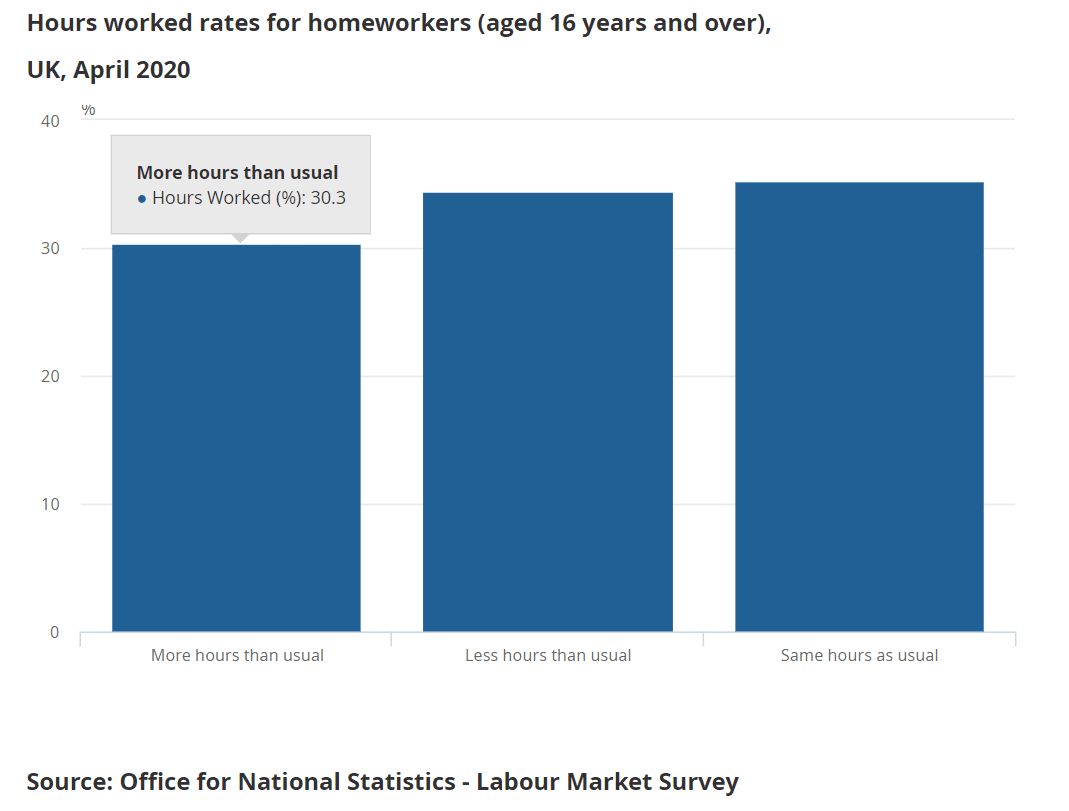
What is hybrid working?
With 77% of UK employees favouring it, hybrid working is definitely the way forward. But what is it? Hybrid working means that employees Work both in-office and remotely. That remote work could be done from a home office, ‘on the go’ during their daily commute, or travelling abroad.
Hybrid working schedules often vary depending on the industry and individuals involved. For some, it could be four days in the office, and one-day remote. For others, it might be three months in office while the next month is spent travelling and checking in online. Generally speaking, the most common option is a split spread over a week or two-week schedule. Employees tend to prefer a roughly 50/50 split between the office and remote work.
Pros of a hybrid workplace
1. Increased emphasis is on productivity
With a hybrid model, employers can redefine their measurement of performance. In an office environment, managers want to see that everyone present is at their desk, working their allocated hours.
In a remote-working environment, however, the focus shifts. Instead of set hours worked, the completion of the project within a set timeframe becomes more important. Supporting teams with the resources they need to streamline their workflows have become a priority.
In an ideal situation, employees are judged on their results rather than on their behaviour – they no longer have to ‘look busy’ when the manager is around but set out to achieve their objectives in their own time. This instils trust in employees and gives them a sense of self-motivation.
Many companies have been using project management and scheduling tools to help employees stay on track whilst working remotely. They can be used to help manage staff rotas, institute ‘coffee breaks’ and keep track of who’s doing what. These apps can be accessed from any number of devices or locations to facilitate remote working.
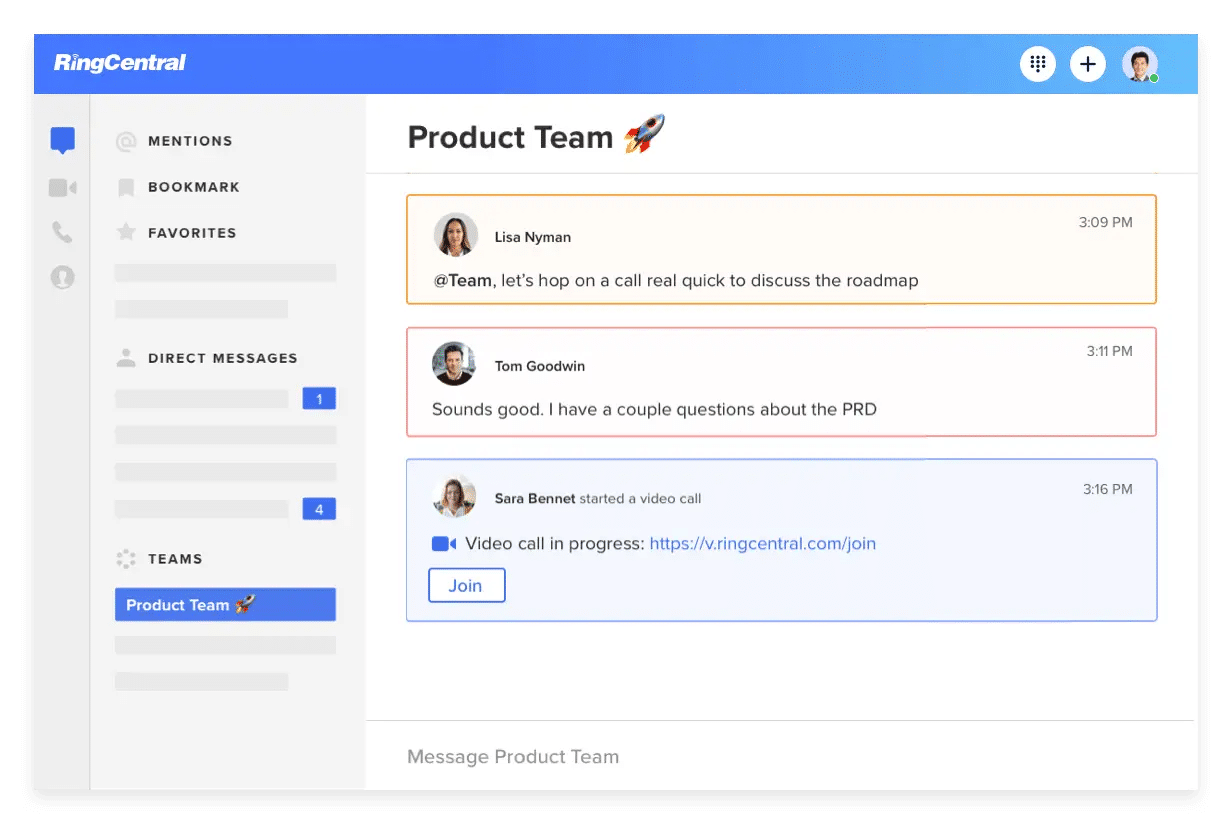
Flexible work models can also boost productivity by fitting in with employees’ personal working schedules. People have their own preferences as to their most productive times of day to work. Efficient hybrid working should allow everyone to work at their own pace and at the times that suit them best, bringing out their best work.
2. A reduction in costs
With fewer employees in the office at any given time, less office space is required. A hybrid model can lead to big rental costs savings – along with some savings on office supplies. For example, there’s no longer a need to refuel the vending machines or refill the water dispenser quite as often. While there may be a need to invest in new technology and software, the savings gained in reduced overheads will far outweigh this expenditure.
It’s not just the business that will save money, either. Employees will see big savings on daily commuting, as well as potential savings on food expenses and those on-the-go coffees.
3. Hybrid working helps prioritise the well-being
According to a recent report, many people prefer working in a remote environment, with more than 9 out of 10 people stating they’d like to carry on working from home in some capacity as we advance.
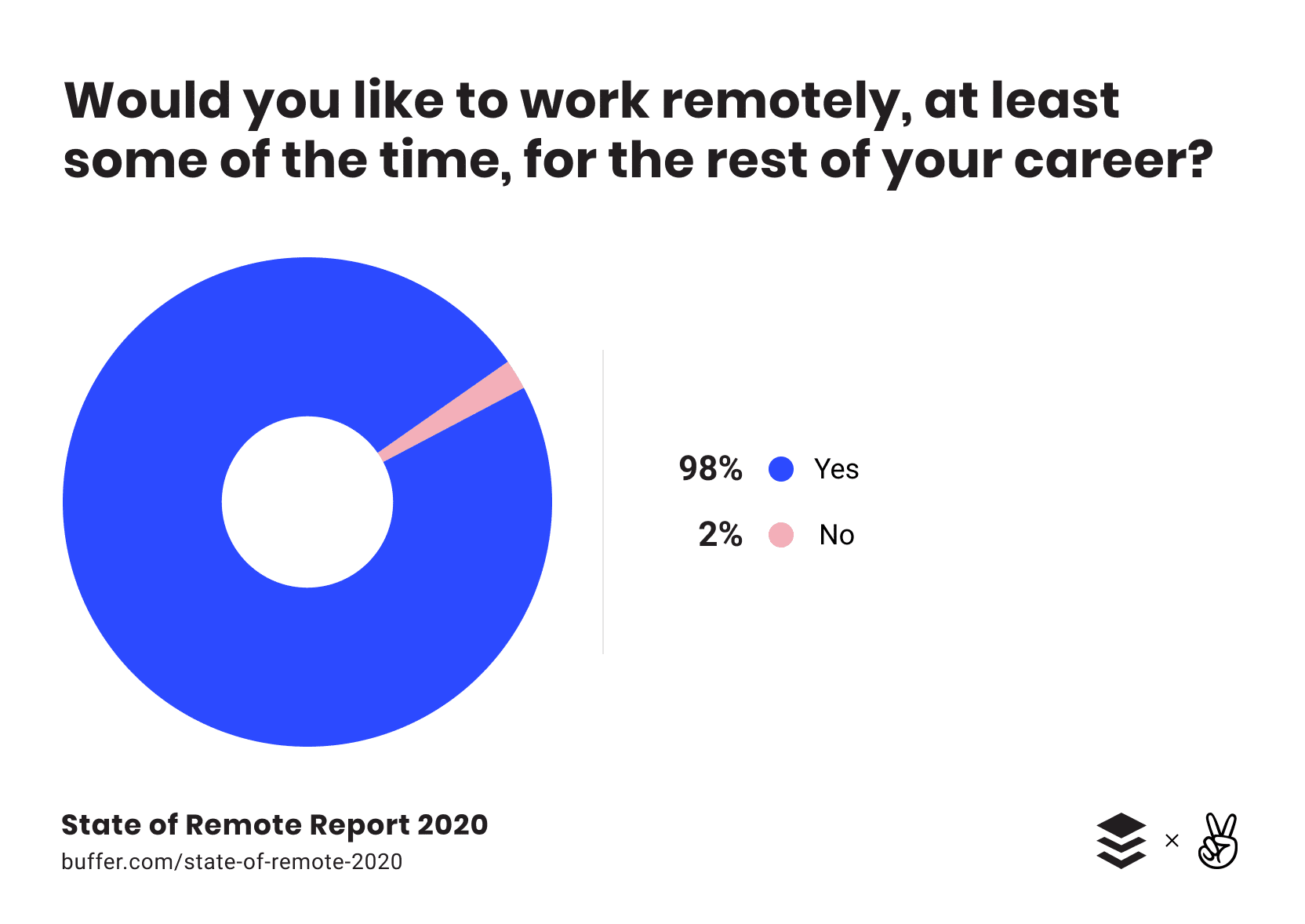
Allowing employees to work from home helps them prioritise their wellbeing and family. It’s a chance for employers to focus on staff morale and ensure they have everything they need to work at their best.
Allowing for hybrid working shows companies care about their employees and are aiming to build a solid work culture. This means employees are happier, more engaged, and more productive. Companies with happy employees consistently outperform the competition.
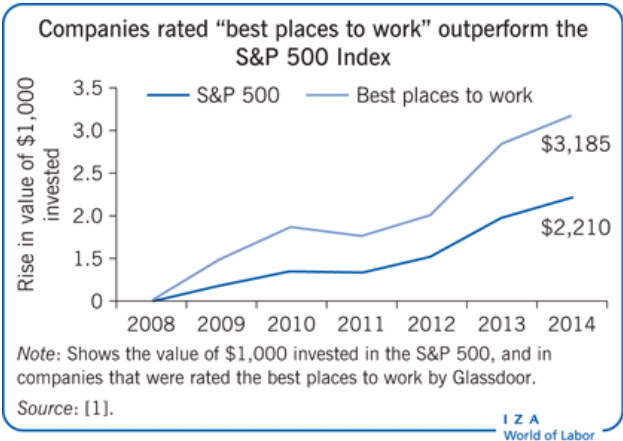
To enable hybrid working employers to offer employees custom solutions, such as ergonomic furniture or portable work fittings. In the absence of catch-ups in the office, employers should also be offering more frequent individual online ‘one to ones’ to help them reach their potential both personally and professionally.
There are many other reasons that hybrid working can improve wellbeing, including:
- Having a private home office rather than being part of a noisy open-plan work environment
- Being able to live somewhere less central, or further away from the office
- Being able to work from warmer locations during the colder months
- Having more free time due to a reduced commute
- Families can pay fewer childcare costs, as well as spending more time with children
- Individuals can work in the way that best suits them, not in the way that looks the most ‘busy’ in an office.
4. Access to more talent
Hybrid working allows companies to expand their hiring criteria and attract employees from farther afield. Companies can also be more flexible around a potential employee’s other commitments. This opens up the company to workers who might not otherwise have been able to apply, diversifying the workforce and bringing in the best talent.
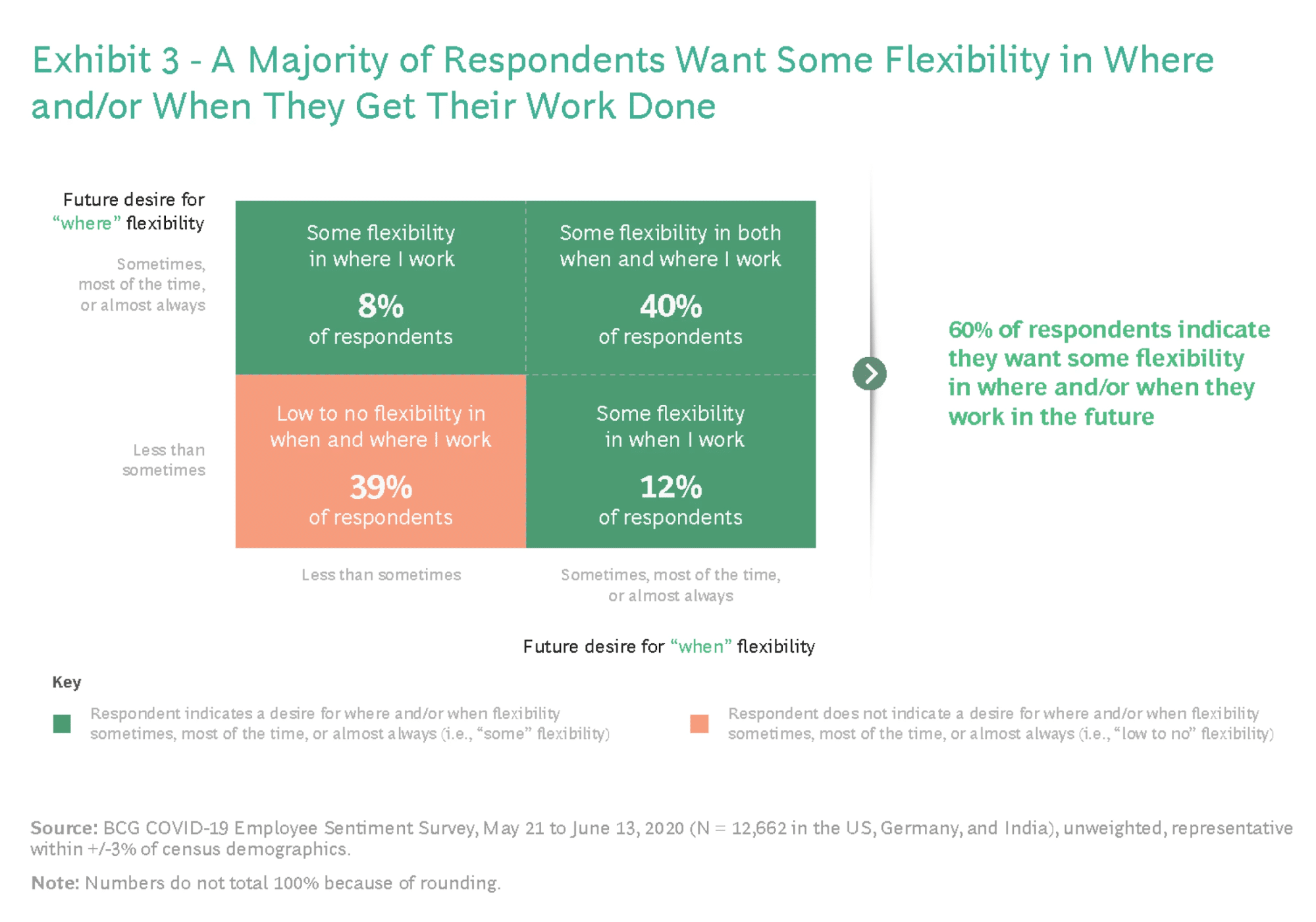
Cons of a hybrid workplace
1. Some people and industries aren’t cut out for remote working
A hybrid work arrangement isn’t for everyone. It’s generally accepted that some people thrive in an office. Some people need the structure of office space or are looking for a more social environment. Equally, some industries aren’t suited to hybrid working. Whether that’s because there’s little work that can be done offsite, or because set hours are required, you may find hybrid working more hindrance than a help.
There’s also a risk that hybrid teams will lose the camaraderie that face-to-face working brings. According to Gartner, remote working can marginalise certain people who may find it harder for their voices to be heard. While hybrid working can go some way towards offsetting this impact, as it’s not 100% remote, it still may not be the right solution for you.
2. Diminished customer experience
For some businesses, client/customer interaction is essential, and without customer-facing employees, important opportunities could be missed in the office. The traditional customer experience could be interrupted without implementing the right remote customer service to ensure new standardised procedures run smoothly.
There’s also the potential for a lot more scheduling conflicts. This is particularly important if you have many in-person one-on-one meetings with clients, as employees will need to fit them into the reduced time they have on-site. While video conferencing can alleviate this, it’s worth being aware of the challenges a hybrid workweek can bring.
3. Divisions between remote and in-office workers
This can happen when some parts of a hybrid team are in the office, and others are working online. Sometimes in-office workers can also perceive their remote colleagues not to be working as hard as they are due to the fact they are not being overseen in person. On the other hand, remote workers might see their office coworkers as having better advancement opportunities, since managers see them daily.
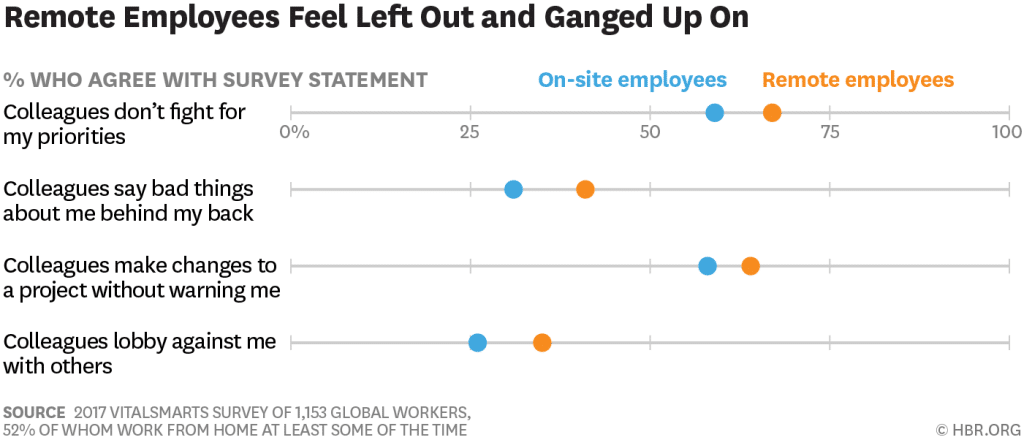
Division can also arise from the perception that office workers have access to office benefits their remote colleagues don’t. Office-based employees may have perks such as snacks, catered lunches or an in-house gym.
Remote workers may have to work out of hours to attend virtual meetings – while office workers have to endure the daily commute. This can create feelings of inequality where each type of worker prefers some of the other party’s benefits.
To overcome the potential of creating two ‘classes’ of workers, it’s essential to have a clear remote work policy. Everyone should know where they stand and understand what’s acceptable and what isn’t. It’s essential to have discussions and ask employees about their expectations, as divisions in teams tend to lead to lower productivity and high turnover rates.
Hybrid working: The best of both worlds?
While there are a few cons to hybrid work models, there are plenty of advantages, from giving employees a better work-life balance to improved productivity. On the downside, some people dislike working on their own and are happiest when surrounded by other people.
Hybrid office working means that teams can still work face to face when it comes to training and seminars or when they need to work together on tight team projects – but still allows them time for productive remote workdays.
Invest in remote collaboration to succeed
One of the main challenges of hybrid working is effective communication. Luckily, teams no longer have to be in the same conference room to collaborate and brainstorm in an office environment. Video conferencing software and team messaging apps have made communication easy across different time zones so that meetings can be location independent.
What the future holds for hybrid workplaces
In the future, it’s predicted that hybrid working will be more common. Offices are likely to become a place you go to from time to time for specific reasons rather than every workday. According to CNBC, Google is testing a hybrid work-from-home model where employees don’t have to return full-time to the physical office. This is due to respondents to their survey saying they want to return to the office – but not permanently.
According to Salesforce data, Gen Z prefers hybrid working, while millennials prefer working from home, closely followed by hybrid working.
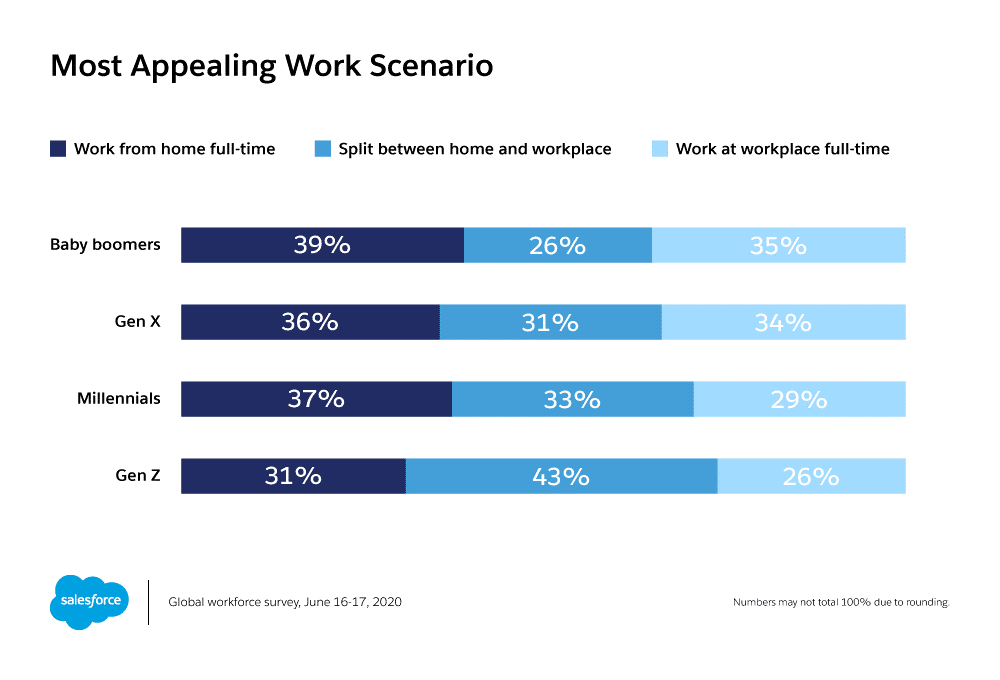
As digital natives, Millennials and the younger Gen-Z’s are well used to running their daily lives via technology – and the prospect of ever new tools and software will make this easier still. Companies will have to cater to their employees’ demands to boost talent and boost retention rates.
Hybrid working requires flexible workspaces.
The hybrid work model of the future needs to balance remote and in-office work. Hybrid offices, therefore, need to have a mix of assigned, open, and reservable space. Space needs to be collaborative to support ad-hoc meetings and gatherings and allow employees to perform solitary tasks when necessary. This will require updates to existing physical office spaces – or require companies to consider adopting flexible office spaces.
Building inclusive work environments
Companies will need to work hard to build team dynamics and ensure no-one gets left out when it comes to company culture. They need to deploy remote work policies and get creative with the social aspects.
To build camaraderie, companies can hold hangouts and monthly company-wide meetings, encourage employees to interact on social channels and regularly build in-person meetings.
Conclusion
Hybrid working can help both employers and employees be more productive without risking their work-life balance. The focus is on working efficiently, rather than simply putting in the hours.
Of course, when working with hybrid teams, communication has to be a priority. All information has to be communicated online. Whether working from home or remotely, every team member needs to feel valued and included. Employees need to know how to contribute, propose ideas or discuss issues – so shared guidelines are a must.
As people become more comfortable with working remotely, behaviours are shifting. More and more companies are moving towards a hybrid work model and adopting flexible working policies. This approach is facilitated by the increase in digital technology, allowing distributed teams to work effectively together and feel like part of a team.
Things to consider when moving to a hybrid workplace include:
- Investing in the right technology
- Weighing up the costs
- Carrying out an employee survey
- Encouraging open communication
- Creating shared guidelines and policies
By getting ahead of the curve and investing now, you’ll be able to draw from a broader talent pool and bring out the best in your existing employees. Hopefully, this post will help you develop a work environment where all workers feel included and invested in working in hybrid work models.
Originally published Jan 20, 2021, updated May 07, 2021




